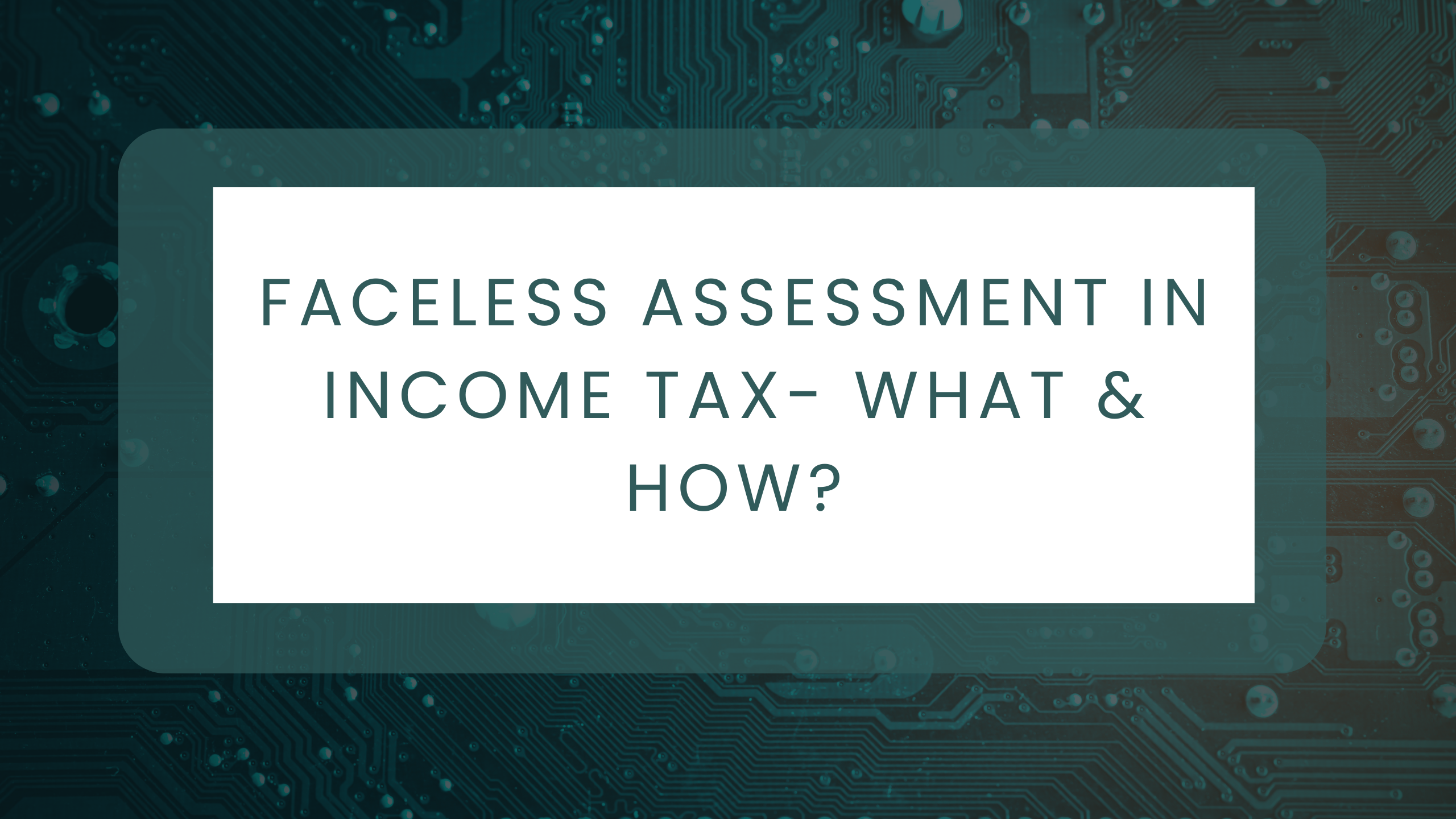Faceless Assessment in Income Tax- What & How?
- CA. Ali Asgar

The Faceless Assessment Scheme was launched by the central government in 2019.
Assessment is the process used to assess the data and other information submitted by the assessee to the income tax division.
The income tax officers issue the order or notice in accordance with their assessment or appraisal. The notice might be for giving any further documentation and proofs that the officers might need.
Previously, everything was accomplished by the physical exchange of documents, and occasionally the assessee's presence before the officers was necessary.
To make the current taxes system simpler, faceless assessment has been implemented. According to it, the assessee is not necessary to appear in person before the officer and all assessment-related proceedings will be conducted online.
One of India's largest direct tax reforms, the faceless assessment programme is built on the guiding principles of effectiveness, accountability, and transparency.
The Faceless assessment methodology includes the following features:
- Data analytics and artificial intelligence are used to choose scrutiny cases.
- Elimination of territorial authority. Assessing officers based in other cities can examine a taxpayer's return from one city.
- Cases are assigned at random to the assessment units.
- Centralised notice distribution with a distinct document identification number.
- There is no requirement to attend an income tax office and no need for human interaction during inspection and evaluation.
- Electronic submission of all replies.
- One-to-one faceless interaction between the officer and the person being assessed.
- Before it is finalised, the draft assessment order must be given to the assessee for comment.
- A preliminary assessment in one city, a second city's examination, and a third city's finalisation.
- Simplicity of tax compliance.
Faceless assessment procedure:
- The assessee will receive a notification in accordance with section 143(2) of the Income Tax Act that has been digitally signed by a NeAC (National e Assessment Centre) officer in the assessee's e-filing account. Additionally, real-time SMS and email will be provided.
- Assessee must provide a response to the notice given pursuant to section 143(2). Within the date and timeframe given in the notification, the assessee must provide a thorough response. The response should only be submitted electronically, not physically.
- A draft assessment order should be generated and run through a computer-based risk management strategy (RMS) instrument if the assessment unit is pleased with the response. If the matter requires a review by the review unit, RMS must indicate such. The assessee must obtain the final assessment order if there is no review.
- If the assessment unit needs more information or details, the assessee will receive a notice under section 142(1) in his registered email address and e-filing account. The assessee must use the e-filing portal to submit a response along with any necessary supporting documents within the time frame specified in the notice.
- The assessee may get a show cause notice along with the draft assessment order if the assessment unit is not satisfied with the assessee's response and wishes to modify the income. The issued show cause notice is open for rebuttal by the assessed.
- The assessee may submit a request for a personal hearing via video conferencing if desired. Once approved, the hearing will take place in the same way.
- The assessee will get a Final Assessment Order after taking into account the show cause notice, personal hearing, and reply to the notice. The assessment will be deemed finished once this has occurred.
- The assessee may file an e-appeal if he is dissatisfied with the assessment order that was issued. Through the National Faceless Appeal Centre (NFAC), the same might be filed.
These anonymous assessment procedures are currently restricted to specific places and situations that the government chooses and occasionally modifies. It is now in an emerging stage and will take time to fully manifest. The government plans to apply it in the future to all evaluation instances when it is practical to do so.

© 2025 Capikar Technologies. All rights reserved